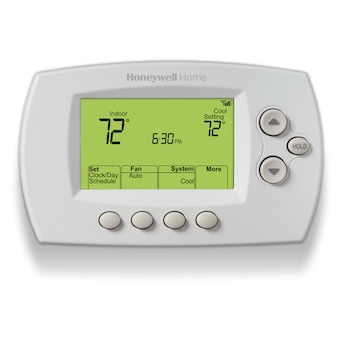Thermostats: The Ultimate Guide to Modern Temperature Control

Introduction:
In the realm of modern home comfort and energy
efficiency, thermostats have emerged as unsung heroes. These unassuming devices
play a pivotal role in regulating indoor temperatures, reducing energy
consumption, and enhan cing overall comfort. In this comprehensive blog, we will
explore thermostats, their types, features, benefits, drawbacks, and their
impact on modern living.
Understanding Thermostats:
At its core, a thermostat is a
temperature-regulating device that controls heating and cooling systems in
homes, offices, and various other environments. It is designed to maintain a
set temperature by detecting fluctuations and adjusting heating or cooling
systems accordingly.

Types of Thermostats
Thermostats come in several types, each
catering to specific needs and preferences:
Manual Thermostats:
These are basic, traditional thermostats that require manual adjustment to set the desired temperature. They are cost-effective but lack advanced features.
Programmable Thermostats:
Programmable thermostats allow
users to set temperature schedules for different times of the day or week. This
feature helps conserve energy by reducing heating or cooling when it's not
needed.
Smart Thermostats:
Smart thermostats are Wi-Fi-enabled
devices that offer remote control via smartphones or tablets. They can learn
user preferences, adapt to daily routines, and provide energy-savin recommendations.
Learning Thermostats:
Learning thermostats, a subset of smart
thermostats, use artificial intelligence to analyze and adapt to users'
temperature preferences automatically. They require minimal user input.
Touchscreen Thermostats:
These thermostats feature intuitive
touchscreen interfaces for easy programming and control. They are often found
in modern, tech-savvy homes.
Benefits of Thermostats
Thermostats offer numerous advantages that improve comfort and energy efficiency:
Energy Savings:
Programmable and smart thermostats can
significantly reduce energy consumption by optimizing temperature settings when
occupants are away or asleep.
Convenience:
Smart thermostats allow remote control via
smartphones, making it easy to adjust settings even when you're not at home.
Comfort:
Thermostats maintain a consistent indoor
temperature, ensuring comfort through out the day.
Customization:
Many thermostats allow users to create
customized temperature schedules to fit their lifestyles and preferences.
Environmental Impact:
Lower energy consumption means reduced
carbon emissions, contributing to a greener environment.
Drawbacks of Thermostats
While thermostats offer numerous
benefits, they are not without drawbacks:
Cost:
Smart and learning thermostats tend to be more
expensive upfront compared to basic manual thermostats.
Complexity:
Advanced thermostats may have a steeper learning
curve for users who are not tech-savvy.
Compatibility:
Compatibility with existing heating and
cooling systems may vary, requiring additional installation or hardware
upgrades.
Impact on Modern Living
Thermostats have had a profound
impact on modern living in various ways:
Energy Efficiency:
They play a key role in reducing energy
consumption and promoting energy-efficient homes.
Convenience:
Remote control and automation features make it
easier than ever to manage indoor temperatures.
Environmental Responsibility:
By reducing energy waste,
thermostats contribute to a more sustainable and eco-friendly way of living.
Comfort and Well-Being:
Consistent indoor temperatures
enhance comfort and well-being, particularly in extreme weather conditions.
Integration:
Smart thermostats can be integrated into larger home automation systems, creating a seamless and interconnected living environment.
Conclusion:
Thermostats may seem like simple devices, but their impact on modern living cannot be overstated. From reducing energy consumption and environmental impact to enhancing comfort and convenience, thermostats are essential comp onents of modern homes. Whether you opt for a basic manual thermostat, a programmable model, or a cutting-edge smart thermostat, the key is to choose the one that aligns with your needs and lifestyle, allowing you to enjoy the benefits of precise temperature control while contributing to a more sustainable future.









